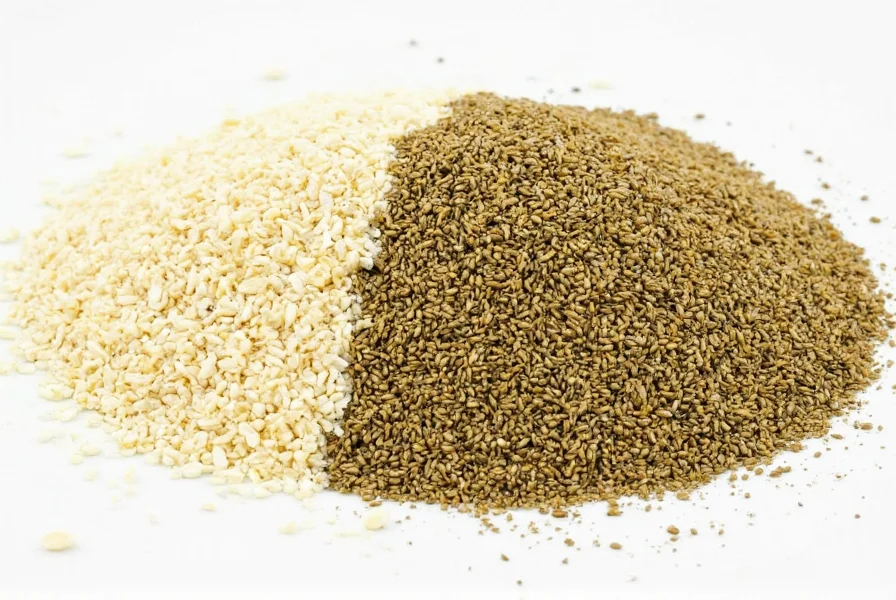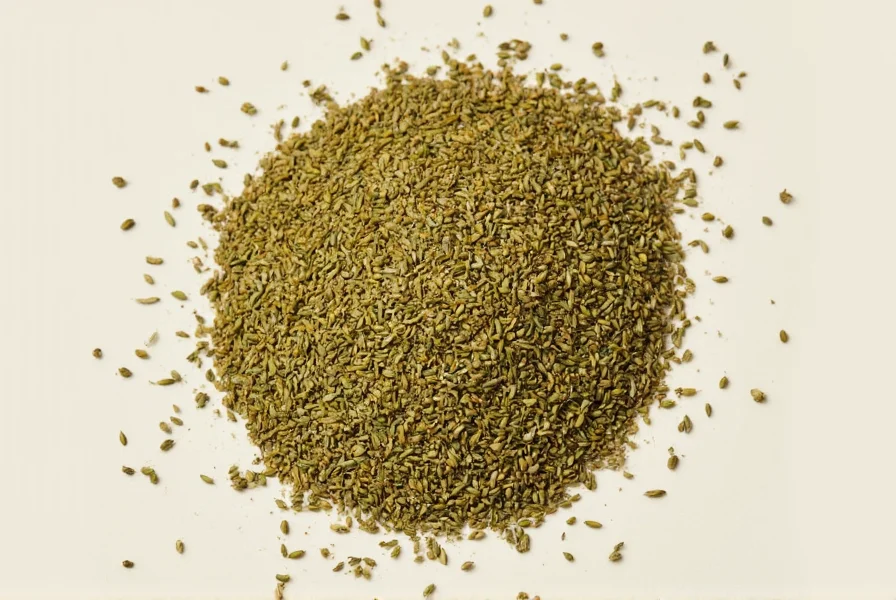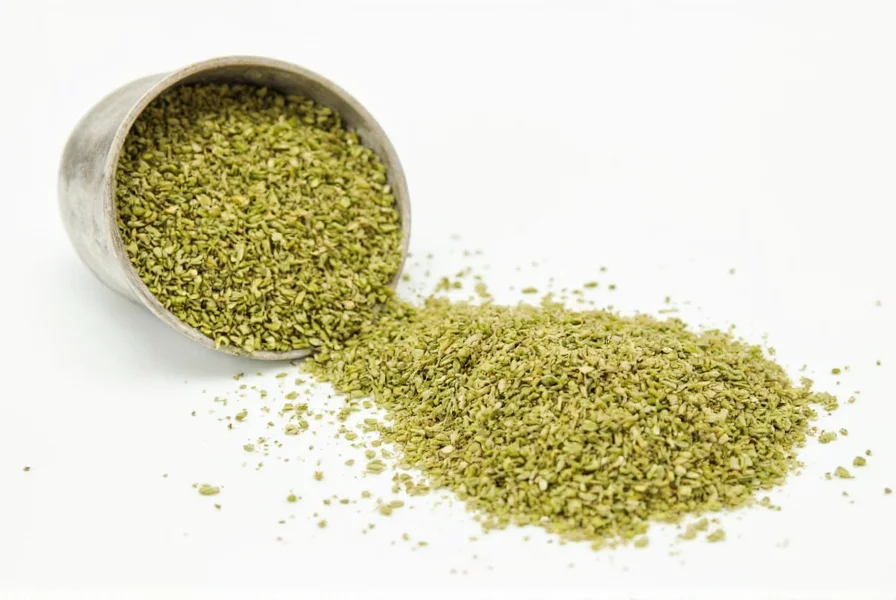Running out of coriander seeds mid-recipe doesn't have to ruin your dish. Understanding the right substitute for coriander seed depends on your specific recipe and desired flavor profile. Coriander seeds offer a unique citrusy, slightly sweet, and floral note that's essential in many global cuisines, particularly Indian, Middle Eastern, and Mexican cooking. The ideal replacement maintains the dish's integrity while compensating for coriander's distinctive characteristics.
Understanding Coriander Seed's Flavor Profile
Before selecting a coriander seed replacement, it's crucial to understand what makes this spice unique. Coriander seeds (from the Coriandrum sativum plant) deliver a complex flavor profile:
- Citrusy lemon-lime notes
- Subtle sweetness with warm undertones
- Floral aroma when toasted
- Mild peppery finish
Unlike its leafy counterpart (cilantro), coriander seeds have a completely different flavor chemistry. This distinction matters when seeking an appropriate substitute for coriander seed in curry or other spice-forward dishes.
Top 5 Coriander Seed Substitutes Ranked by Effectiveness
| Substitute | Ratio | Best For | Flavor Difference |
|---|---|---|---|
| Cumin + Lemon Zest | 3/4 tsp cumin + 1/8 tsp zest per 1 tsp coriander | Mexican, Middle Eastern dishes | Earthier, less citrusy |
| Garam Masala | 1:1 ratio | Indian curries, stews | Warmer, more complex spice blend |
| Caraway Seeds | 1:1 ratio | European breads, sauerkraut | More anise-like, stronger flavor |
| Fennel Seeds | 3/4:1 ratio | Mediterranean dishes | Sweeter, more licorice notes |
| Coriander Powder | 3/4:1 ratio (powder:seeds) | Quick sauces, marinades | Less complex, more immediate flavor |
Detailed Substitute Analysis
Cumin as a Coriander Seed Replacement
Cumin makes the most accessible coriander seed alternative for Mexican dishes due to its earthy warmth. While cumin lacks coriander's citrus notes, adding a pinch of lemon or orange zest bridges this gap effectively. For every teaspoon of coriander seeds required, use 3/4 teaspoon ground cumin plus 1/8 teaspoon citrus zest. This combination works particularly well in chili, taco seasoning, and bean dishes where coriander typically appears.

Garam Masala for Indian Cooking
When seeking a coriander seed replacement in Indian cooking, garam masala provides the most authentic solution. Since coriander seed is a primary component in most garam masala blends, using the finished spice mix creates a harmonious flavor profile. Substitute at a 1:1 ratio, but reduce other spices in your recipe by 25% to prevent overpowering the dish. This works exceptionally well in butter chicken, tikka masala, and vegetable curries where coriander seed typically forms the flavor base.
Caraway Seeds: The Closest Flavor Match
Caraway seeds offer the most similar flavor chemistry to coriander seeds, sharing citrus and floral notes with a slightly more pronounced anise character. Use at a 1:1 ratio in European dishes like rye bread, sauerkraut, or potato salads. For Middle Eastern recipes, reduce to 3/4:1 ratio and add a pinch of ground ginger to balance the stronger flavor. This coriander seed substitute ratio maintains structural integrity in recipes while delivering comparable aromatic complexity.
Cuisine-Specific Substitution Guide
Indian Cuisine Substitutes
For authentic Indian dishes requiring coriander seeds:
- Best option: Garam masala at 1:1 ratio
- Budget option: Equal parts cumin and fennel seeds, toasted and ground
- Emergency fix: 3/4 teaspoon coriander powder plus 1/4 teaspoon lemon juice
Middle Eastern & Mediterranean Substitutes
In za'atar, hummus, or falafel recipes:
- Best option: Equal parts cumin and sumac with a pinch of lemon zest
- Traditional approach: Caraway seeds at 3/4:1 ratio with added mint
- Quick fix: Dill seed at 1:1 ratio (works best in yogurt-based sauces)
When Substitution Isn't Recommended
Some dishes rely so heavily on coriander seed's unique chemistry that substitutes significantly alter the final product. Avoid substituting in:
- Traditional berbere spice blend (Ethiopian)
- Certain pickling recipes where coriander's preservative qualities matter
- Specific Ayurvedic spice combinations where coriander plays a medicinal role
In these cases, consider making a quick trip to the store or adjusting your recipe timeline rather than compromising the dish's authenticity.
Creating Your Own Coriander Substitute Blend
For frequent cooks needing a reliable homemade coriander seed replacement, create a versatile blend:
- Mix 2 parts cumin seeds, 1 part fennel seeds, and 1/2 part caraway seeds
- Add 1 teaspoon dried lemon zest per 1/4 cup of seed mixture
- Store in an airtight container away from light
- Use at 3/4:1 ratio (substitute:coriander)
This blend captures coriander's essential flavor dimensions while providing flexibility across multiple cuisines. Toast the mixture lightly before grinding for maximum flavor release in cooked dishes.

Storage Tips for Substitute Spices
Proper storage maintains the potency of your coriander seed alternative ingredients:
- Keep whole seeds in dark glass jars away from heat sources
- Grind spices only when needed (pre-ground loses 40% flavor in 6 months)
- Add citrus zest to blends within 24 hours of use for maximum freshness
- Freeze seed blends for long-term storage (up to 2 years)
Frequently Asked Questions
Can I use cilantro instead of coriander seeds?
No, cilantro (the leaf) and coriander seeds come from the same plant but have completely different flavor profiles. Cilantro leaves provide a bright, herbaceous flavor while coriander seeds offer warm, citrusy notes. For seed substitution, use cumin with citrus zest instead.
What's the best coriander seed substitute for curry?
Garam masala works best as a coriander seed replacement in curry at a 1:1 ratio. Since coriander seed is a primary component in most garam masala blends, this substitution maintains authentic flavor while adding complementary spices like cardamom and cloves.
How much cumin equals one teaspoon of coriander seed?
Use 3/4 teaspoon cumin for every 1 teaspoon of coriander seed. Since cumin has a stronger, earthier flavor, this ratio prevents overpowering your dish. Always add a pinch of citrus zest to replicate coriander's distinctive lemon notes.
Can I substitute coriander powder for coriander seeds?
Yes, but use 3/4 teaspoon coriander powder for every 1 teaspoon of whole seeds. Powdered coriander delivers more immediate flavor but lacks the nuanced complexity of toasted whole seeds. For best results, toast the powder briefly in a dry pan before use.
Why does my coriander substitute taste bitter?
Bitterness typically occurs when substitutes like cumin or caraway are overused. Coriander has natural sweetness that balances savory elements. If your substitute tastes bitter, add 1/8 teaspoon honey or a squeeze of citrus to counteract the bitterness and restore balance.











 浙公网安备
33010002000092号
浙公网安备
33010002000092号 浙B2-20120091-4
浙B2-20120091-4